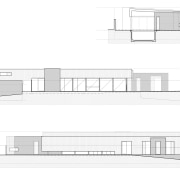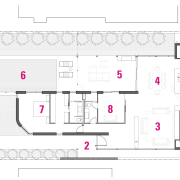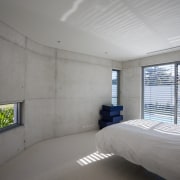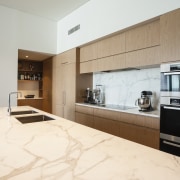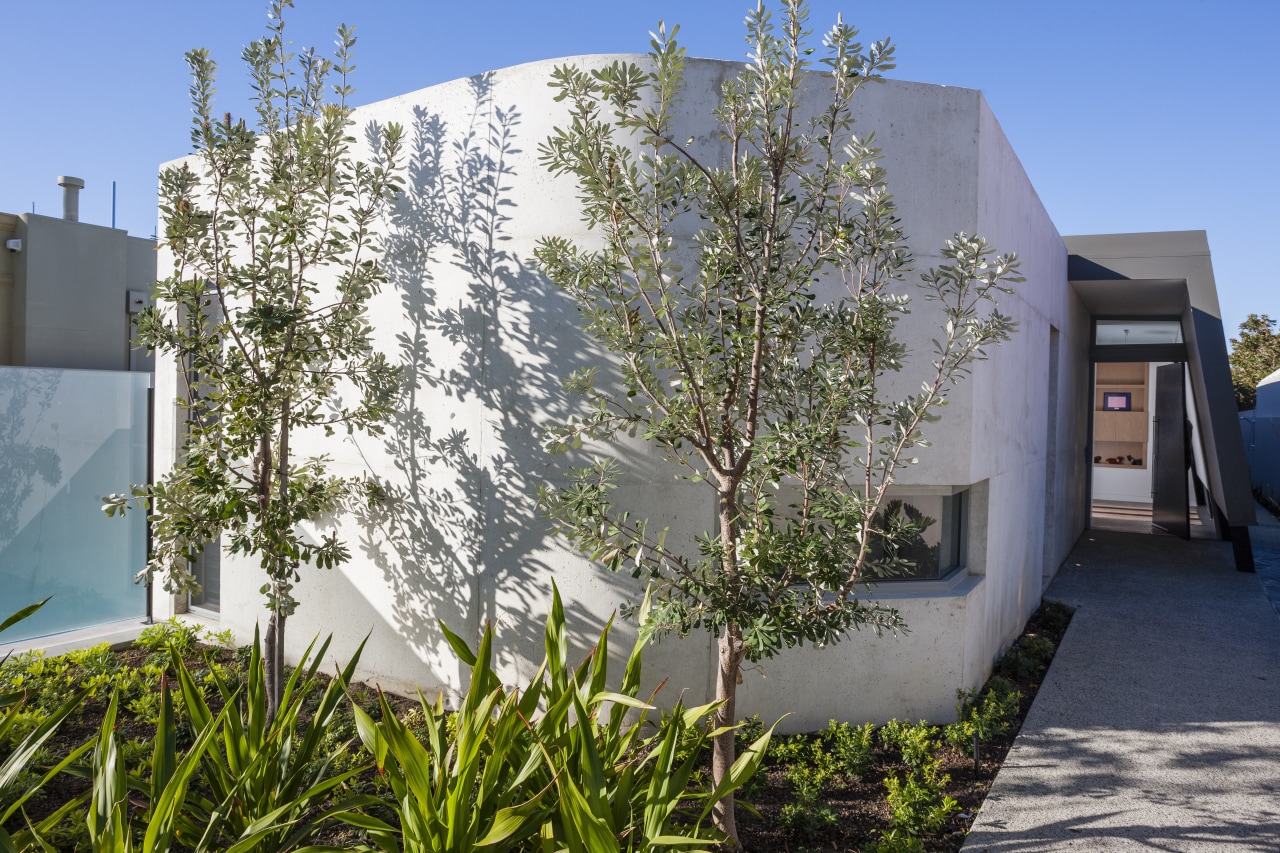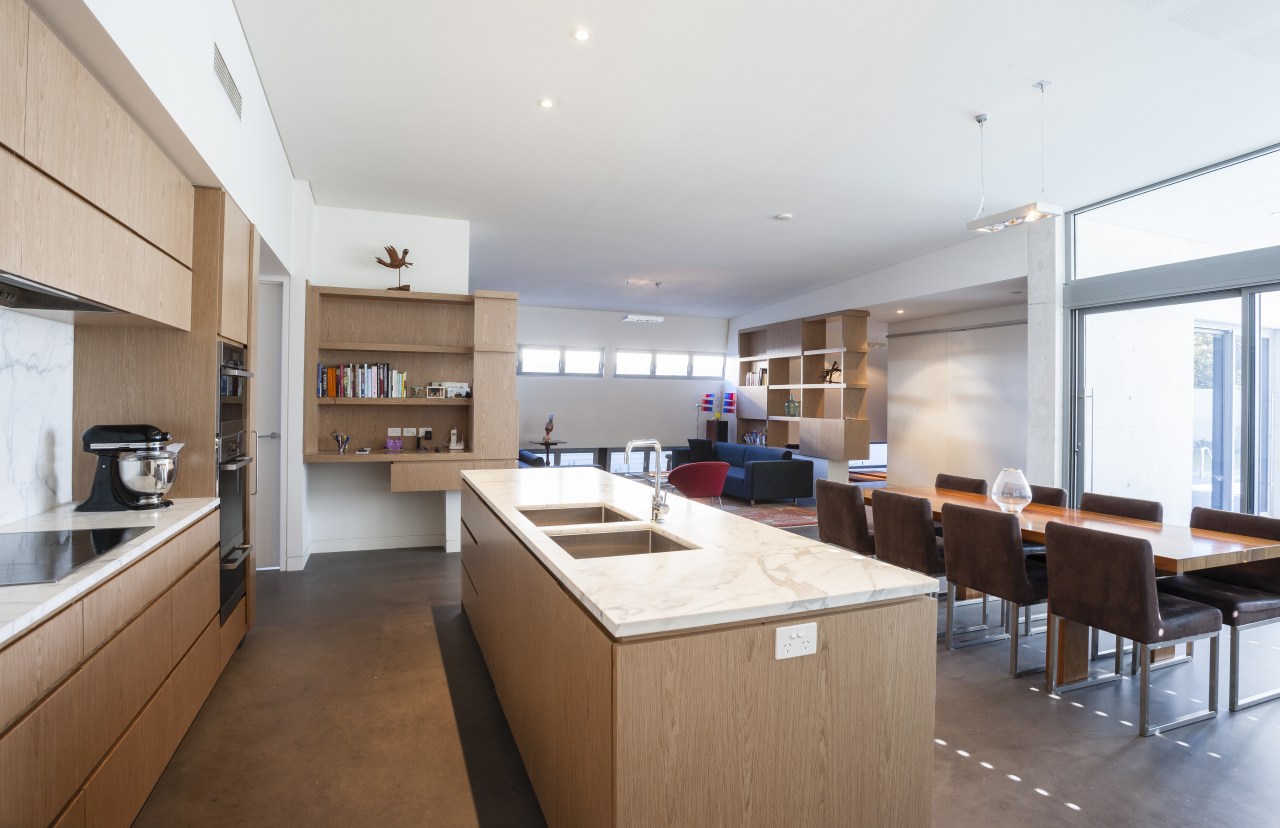Home by the sea architect Tim Wright
Single-level coastal house by Tim Wright
Quarter-acre properties might be long gone from most of our cities, but families are still keen to make the best use of the available land.
This single-level coastal house, just a couple of streets back from the beach, is positioned to one side of a long, narrow site, so there is plenty of space for a pool and an area of lawn.
Architect Tim Wright of Wright Feldhusen Architects says the owners also benefit from an especially large grass verge at the roadside.
"Although not part of the property, this land helps to expand the outlook and keeps the road at a distance. Consequently, we focused the house towards the street, which is on the west side, but added an obscure glass pool fence for safety and privacy."
To enhance the sense of sanctuary, a solid, sculptural off-form concrete element anchors the front of the house and shields it from the strongest winds. Wright says the concrete mass also helps with thermal and acoustic insulation, and has a calming presence, inside and out.
The rest of the house features rendered brick and a distinctive grey Colorbond roof that wraps right down around the wall on the south side of the house, and tucks around the north side to embrace a poolside alfresco living area.
A large, pivoting front door echoes the angled roof element, as does a sculptural dividing wall inside the entry, which is set proud of the exterior wall.
"The roof element is like a hugging device, a protective gesture that encloses the living spaces within," says the architect. "And the inset wall within the entry allows a shard of light to pierce the space, adding to the drama."
A cantilevered wood veneer shelving unit provides glimpses from the entry into the living room beyond. A similar shelving unit on the opposite side of the room bookends the space, and provides a place to conceal audiovisual equipment. A row of low windows and matching high windows bring additional light into the living room, while the wall between helps to screen a neighbouring property.
"There is a minimalist simplicity about the interior that we love," says one of the owners. "From the concrete floors to the absence of skirting boards, cornices and mouldings, it's a very clean-lined look that suits the way we live. The way the house is separated into three zones is also ideal for family living."
The front of the house is given over to the master suite and a guest suite-study area, while the rear of the house accommodates the children's bedrooms, laundry, a television room and garaging with a loft-style area above.
"There are private and shared areas," says Wright. "The central zone is where everyone comes together. This is the open-plan family living area, kitchen and dining area, a communal space where the parents can keep an eye on the children both inside and out."
For visual continuity, the kitchen cabinets are in the same wood veneer as the shelving units. And wherever possible, appliances are integrated into the flush cabinets to keep the look sleek and streamlined. A separate pantry at one end of the galley-style space ensures clutter can be kept out of sight.
One entire wall in the family area opens to a covered alfresco seating area by the lawn and pool, which laps against the house. Vental outdoor blinds between the columns, and over a bedroom in the master suite provide protection from the sun in the north and the wind.
"Passive design elements mean minimal reliance on air conditioning," says Wright. "With the doors and windows open, there is a natural cross ventilation."
The architect says the materials used in the house provide much of the decoration. In the master suite, for example, the off-form concrete walls have been left raw and exposed on the inside as well as the outside. And in the master bathroom, the wood veneer cabinets and the natural veining of the stone floor tiles enhance the simple, contemporary character.
Credit list
Landscaping
Pool
Paving and pool surround
Gates and fencing
Story by: Justin Foote
Photography by: Jamie Cobeldick
Home kitchen bathroom commercial design
Connected to the ocean
Masculine meets mixed use
Contrast and connection

